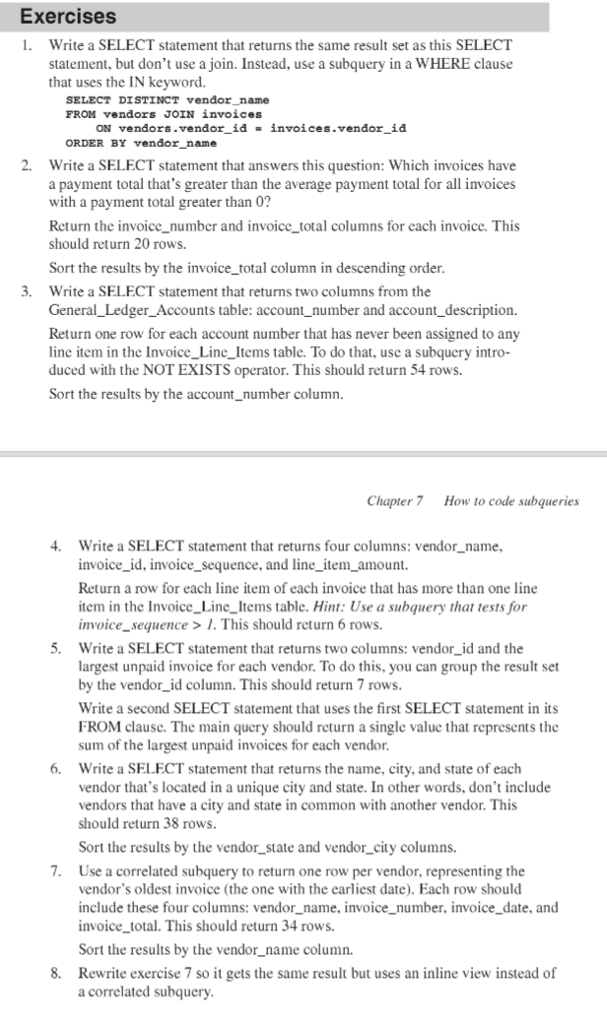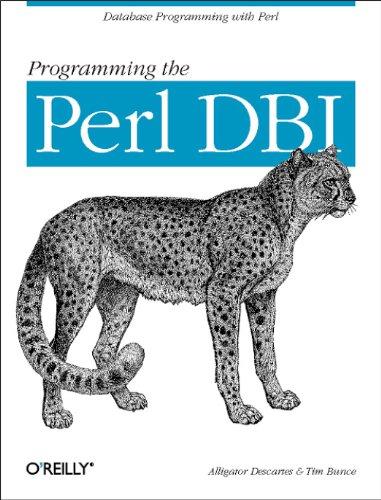
Exercises Write a SELECT statement that returns the same result set as this SELECT statement, but don't use a join. Instead, use a subquery in a WHERE clause that uses the IN keyword 1. SELECT DISTINCT vendor_name FROM vendors JOIN invoices ON vendors.vendor idinvoices.vendor id ORDER BY vendor name Write a SELECT statement that answers this question: Which invoices have a payment total that's greater than the average payment total for all invoices with a payment total greater than 0? Return the invoice number and invoice total columns for cach invoice. This should return 20 rows. Sort the results by the invoice_ total column in descending order. Write a SELECT statement that returns two columns from the General_Ledger_Accounts table: account_number and account_description. Return one row for each account number that has never been assigned to any line item in the Invoice_Line_Items table. To do that, use a subquery intro- duced with the NOT EXISTS operator. This should return 54 rows. Sort the results by the account_number column. 2. 3. Chapter 7 How to code subqueries Write a SELECT statement that returns four columns: vendor_name, invoice_id, invoice_sequence, and line_item amount. Return a row for each line item of each invoice that has more than one line tem in the Invoice Line_Items table. Hint: Use a subquery that tests for invoice sequence >1. This should return 6 rows Write a SELECT statement that returns two columns: vendor_id and the largest unpaid invoice for each vendor. To do this, you can group the result set by the vendor_id column. This should return 7 rows Write a second SELECT statement that uses the first SELECT statement in its FROM clause. The main query should return a single value that represents the sum of the largest unpaid invoices for each vendor Write a SELECT statement that returns the name, city, and state of each vendor that's located in a unique city and state. In other words, don't include vendors that have a city and state in common with another vendor. This should return 38 rows 5. 6. Sort the results by the vendor_state and vendor_city columns. Use a correlated subquery to return one row per vendor, representing the vendor's oldest invoice (the one with the earliest date). Each row should include these four columns: vendor_name, invoice_number, invoice date, and invoice total. This should return 34 rows. Sort the results by the vendor_name column. Rewrite exercise 7 so it gets the same result but uses an inline view instead of a correlated subquery 7. 8







